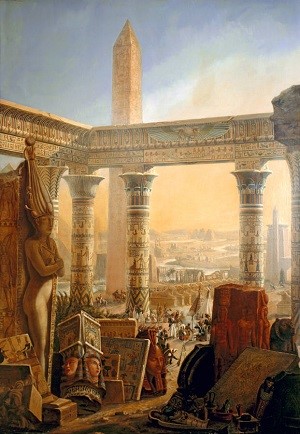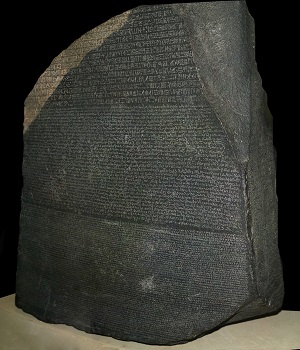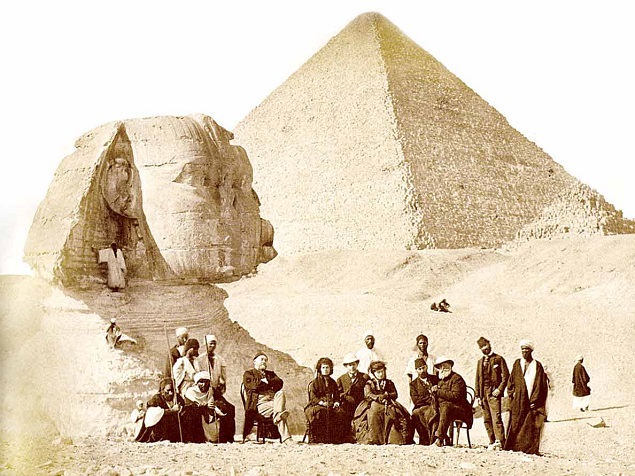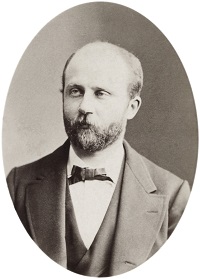19th Century Egypt:
The Birth of Egyptology

“If it’s the Egyptian Antiquities Service, why don’t the Egyptians run it?” I asked.
Mr Struthers shrugged. “Good question! I wish I knew.”
The Turkish Ottomans conquered Egypt in 1517, creating a province which they left in control of the Egyptian military, the Mamluks. Egypt remained this way until the French general, Napoleon, fresh from his victory over Italy, invaded the country in 1798. Napoleon’s real target, however, was the British. Knowing that France was ill-prepared to face Britain’s superior naval power—a matter of necessity, given that English Channel stood in the way—he turned his attentions to Egypt, hoping to interrupt Britain’s trade route to its cash-cow, India. But his plans were frustrated. Though he won a number of battles—one a mere fifteen miles from the pyramids, where, despite the both sides starting out equal, the French took twenty-nine losses to the Egyptians’ two thousand—he found himself stranded when his fleet was destroyed by the British under the command of Horatio Nelson. After a pointless four-month foray into Damascus to chase the fleeing Ottomans, he and his surviving forces eventually quit Egypt, having failed to win over Egyptian hearts and minds.
His departure created a power vacuum fought over by three opposing factions—the Egyptian Mamluks, the Turkish Ottomans, and a force of Albanian mercenaries in the service of the Ottoman Empire (two separate Ottoman entities). The Albanians eventually won. After much politicking, one of their most popular commanders, a former tax collector named Muhammed Ali, was appointed governor. Muhammed (like his sons Ibrahim and Sa’id and his grandson Isma’il, who all succeeded him) recognized the need for Egypt to modernize. To this end he sent promising citizens to study in Europe and brought Europeans over to help establish schools and hospitals. Sometimes this was to the benefit of Egypt but often it was not.

Among the first to come was the Italian born Giovanni Battista Belzoni, a former circus strongman with a flair for hydraulics. By 1815 Muhammed was in the process of turning the country’s agriculture over to cotton, for which he needed improved irrigation, and Belzoni had developed a pump to do exactly that. But for some reason the project was not approved, and Belzoni found himself with time on his hands. He ended up in Luxor, in the employ of the British consul Henry Salt, at a time when only a handful of tombs had been discovered across the river in the Valley of the Kings. Keen to discover one for himself, he set about studying the terrain, taking note of any unusual features: the play of dark and light in the structure of the soil, the slightest hint of a depression in the ground—anything that might indicate an entrance that had long since been covered over. Within a couple of days he’d discovered several buried entrances. While this part of his method is still employed today, what he proceeded to do next is not. Eager to gain access as quickly as possible, he set his engineer’s mind to work and constructed a battering ram to breach the tombs by force, the most famous being that of Seti I.

The Rosetta Stone
European fascination with all things Egyptian was thriving, due in part to the finds made by Napoleon’s army and the hundred and sixty-seven academics and scientists (l’Institut d’Égypte) included in his so-called “expedition”, many of which—the most important being the Rosetta Stone—were confiscated by the British when the French withdrew in 1801. The Rosetta Stone was unique in that it was inscribed with a single message in three distinct languages: hieroglyphs, whose meanings remained elusive, an unknown cursive script that was eventually named “demotic”, and Greek, which could be—and eventually was—translated. Luckily the French had made printed impressions of the Rosetta Stone’s surface soon after its discovery, because it would take many linguistic scholars from all across Europe, often working in pairs or finding inspiration in the published results of others, to finally crack both the demotic language and the hieroglyphic code. The key to their success, which came in the early 1820s, was the identification of a small number of phonetic Greek names which appeared in the hieroglyphs’ cartouches—the hieroglyphic equivalent of quotation marks.
The 1820s also saw the arrival of the Englishman John Gardner Wilkinson in the Valley of the Kings, and it’s he who is responsible for how the tombs are named now. His method was simple. He walked around with a pot of paint in his hand, painting numbers on the stakes that marked the tombs to indicate the order in which they were found, and so Seti I’s tomb became KV17. As prosaic as this method may be, it's the same one Carter used when he discovered Tut’s tomb: KV62.
During this period, Egypt's ruler Muhammed Ali set out on a number of military campaigns independent of his Ottoman masters, which were designed to increase his own territory and power, and ultimately strengthen his case for independence from the Ottoman Empire. Though he was often victorious, political pressure was usually brought to bear by nations keen to preserve the balance of international power, and he was seldom allowed to keep any of his territorial gains. He was briefly succeeded on his death by his son Ibrahim in 1848, who died barely a month later, and then by his reviled grandson Abbas, who tried to reverse the progress Muhammed had achieved. He was murdered in 1854. Abbas was succeeded by Sa’id, Muhammed’s fourth son.
One of Sa’id’s first acts as governor was to grant a concession to the French diplomat, Ferdinand de Lesseps, a man whom he had known for twenty years, to form a company to construct and operate a commercial shipping canal between the Mediterranean and the Red Sea. Despite opposition from British government—who realized that its merchant navy would be excluded from this faster route to India—the Suez Canal Company came into being in 1858, with the majority of shares going to France. Construction on the canal began six months later in 1859.
Unlike Abbas before him, Sa’id maintained a special relationship with France, and with one Frenchman in particular: Auguste Marriette. Marriette had been dispatched by the Louvre in 1851 to acquire a selection of manuscripts for its collection—a job for which he lacked the proper experience. Instead he unearthed the serapeum at Saqqarra (famed for its sarcophagi of the Apis bulls). It was Marriette who was responsible for brokering the half-and-half rule (which is also mentioned by Wilson Struthers in The Scarab Heart), whereby half of any treasures found would henceforth remain in Egypt. As poor as this deal sounds, it was substantially better than the system it replaced, where any finds were simply smuggled out of the country. When Mariette’s term was finally up, he’d come to realize that he had fallen in love with Egypt and swiftly made his return there within a year. In 1858 Sa’id appointed him to a new post as conservator of Egyptian monuments, a difficult task as there were now so many, but made easier by the fact that all permissions to dig were being withdrawn—much to the horror of the British.

Seated in chairs, from left to right: Auguste Mariette, Dona Josefina da Fonseca Costa, lady-in-waiting of the Empress, Luís Pedreira do Couto Ferraz, Baron and later Vicount of Bom Retiro, Empress Teresa Cristina, an unidentified man and Emperor Dom Pedro II of Brazil, surrounded by local Egyptians during the Emperor's trip to Egypt at the end of 1871. Behind them can be seen the Great Sphinx of Giza and the Giza Necropolis.
The special relationship also blossomed with Sa’id's successor, Isma’il, who was as keen to modernize Egypt along European lines as his grandfather Muhammed had been. In 1863 Mariette managed to secure government funding to set up a museum in Cairo. The reason the money might have been forthcoming could be due to the surge in Egyptian cotton sales, brought about by a world cotton shortage resulting directly from the American Civil War.
Work on the Suez Canal was progressing. It opened to shipping in 1869, the same year that Isma’il launched Egypt’s first opera house in Cairo with a production of Verdi’s Rigoletto (yes, the one famed for the catchy “La donna è mobile”). How Isma’il must have loved Verdi, for he commissioned an opera from him, based on a plot devised by his good friend Mariette, at a cost of 150,000 francs. As a result Verdi’s Aida received its world première at the Cairo Opera House on December 24th 1871, some little time after the remaining works were completed on the Suez Canal. Mariette himself designed the costumes and oversaw the design and construction of the sets, which were fabricated for him by the Paris l’Opéra and then shipped out. Verdi, who’d been quite snotty about the whole event, refused to attend.
Isma’il, eager to expand his country’s infrastructure, also launched a programme to build a countrywide railroad system. Despite these innovations all was not well. The final cost of the canal soared to more than double its original estimate, and in the first two years of operation it carried fewer vessels than anticipated. When in 1875 the national debt had risen to more than £100,000,000 and further credit from international banks was denied him, Isma’il was forced to sell Egypt’s interests in the Suez Canal Company in order to meet the repayments on his country’s various loans. The buyer? Britain, who’d done nothing but disparage the scheme since its inception. With funding from the Rothschilds, British Prime Minister Benjamin Disraeli snapped up the shares at the knock-down price of £4,000,000—and he did so secretively, without bothering to bring the matter before parliament for approval. Dodgy or what?
The subsequent enquiries by both Britain and France into Egypt’s finances led to an alliance where the two nations assumed joint control over Egypt’s government in a bid to restore her credit. They stripped Isma’il of his powers and in 1879, in conjunction with Ottoman Empire, forced him to cede his throne to his son, Tewfik.
Auguste Mariette, on whom Isma’il had bestowed the rank of pasha (the equivalent of a regional governor) for his services to Egypt, was meanwhile going blind. Realizing that his health was deteriorating rapidly, he secured the appointment of his acquaintance and fellow-Frenchman, Gaston Maspero, as his successor as director-general of the Egyptian Antiquities Service. He wanted to make sure that France retained a measure of control over archaeology in Egypt, as British Egyptologists now outnumbered the French. It was a shrewd move, for in 1882, a year after Mariette’s death, British troops invaded and occupied Egypt, supposedly to protect Tewfik from his opponents in Egypt’s nationalist government. Britain, in a kind of Machiavellian manoeuvring second only to its appalling, underhanded infiltration of China during this same period, had managed to do what Napoleon had not.

Gaston Maspero (1846 - 1916), French Egyptologist. Original image available at the Bibliothèque Nationale de France
As the new director of the Antiquities Service, Maspero’s first task was to try and stem the illegal flow of ancient artefacts out of the country. For a number of years high quality scrolls with no verifiable provenance had been appearing in dribs and drabs on the European antika (antiquities) market, Books of the Dead dedicated to Queen Henetowey and the Pinodjem family of high-priest rulers. As these all dated from the Third Intermediate Period, it stood to reason that someone had secretly uncovered a 21st Dynasty tomb in or around the Valley of the Kings. Maspero sent his assistant, Emile Brugsch, to investigate.
The trail led Brugsch to Ahmed, Hussein, and Muhammed Abd er-Rassoul, three brothers from Gurna, a small village on the west bank whose occupants had made their living from tomb robbing for centuries. Though there was no actual proof, the brothers confessed under torture (or, if one source is to be believed, after questioning by the local pasha, who interrogated his suspects whilst he sat in an urn filled with water, with only his head showing). They eventually led Brugsch to a tomb they’d discovered at Deir el-Bahri that housed a substantial cache of mummies, some from the 18th and 19th Dynasties, presumably moved there in antiquity to protect them. The discovery went a long way to explaining why, up until this point, no mummy had ever been found in the Valley of the Kings.
And this is how things stand in mid-October 1885 when my novel, The Scarab Heart, begins.